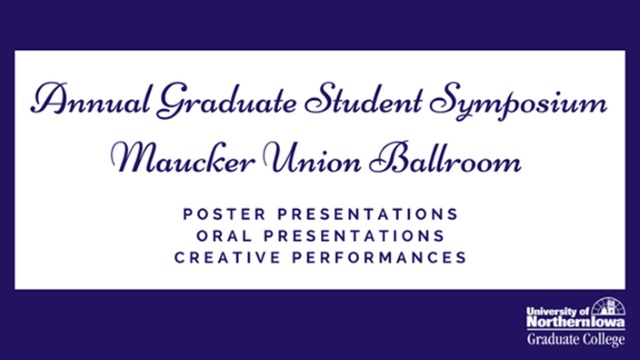
Complete Schedule
The Moral Motivations of Negative Attitudes Toward Transgender People
Award Winner

Recipient of the 11th Annual Graduate Student Symposium Scholarship Award, Poster Presentations - First Place (2018)
To go to the Graduate Student Symposium event page, Click here
Presentation Type
Poster Presentation (Electronic Copy Not Available)
Keywords
Transgender college students--Public opinion;
Abstract
Heterosexual participants typically view transgender people more negatively than other LGBTQ+ groups (Nagoshi et al., 2008; Norton & Herek, 2013). Two possible explanations for these negative attitudes are provided by moral foundations theory (MFT; Haidt & Graham, 2007) and the theory of dyadic morality (TDM; Gray, Young, & Waytz, 2012). This study compared these approaches by examining feelings of generalized disgust and harm after exposure to a transgender (vs. other) target. We also compared explicit feelings toward transgender individuals vs. other groups and correlated these reactions with individual difference variables. 272 mTurk participants (55% females; Mage = 29) were randomly assigned to read and evaluate a scholarship essay in which the target described their identity as a transgender male, transgender female, first generation college student, or atheist. Participants then completed measures assessing the target, target groups, and their own attitudes and personality. There were no differences in generalized feelings of disgust or harm or social distance by condition; however, there were differences in more explicit measures. Transgender people were perceived as more disgusting and harmful and elicited more anger than first generation students (but less than some other groups). Participants who reported more positive transgender attitudes reported less religious fundamentalism, conservatism, and ingroup, authority, and purity moral foundations, and more harm and fairness moral foundations. It may be that transgender people do not trigger automatic responses as predicted by MFT or TDM, or these effects may be small or require more intense interaction.
Start Date
3-4-2018 11:00 AM
End Date
3-4-2018 1:30 PM
Year of Award
2018 Award
Faculty Advisor
Helen Harton
Department
Department of Psychology
Copyright
©2018 Hailey Hatch
Embargo Date
3-30-2018
The Moral Motivations of Negative Attitudes Toward Transgender People
Heterosexual participants typically view transgender people more negatively than other LGBTQ+ groups (Nagoshi et al., 2008; Norton & Herek, 2013). Two possible explanations for these negative attitudes are provided by moral foundations theory (MFT; Haidt & Graham, 2007) and the theory of dyadic morality (TDM; Gray, Young, & Waytz, 2012). This study compared these approaches by examining feelings of generalized disgust and harm after exposure to a transgender (vs. other) target. We also compared explicit feelings toward transgender individuals vs. other groups and correlated these reactions with individual difference variables. 272 mTurk participants (55% females; Mage = 29) were randomly assigned to read and evaluate a scholarship essay in which the target described their identity as a transgender male, transgender female, first generation college student, or atheist. Participants then completed measures assessing the target, target groups, and their own attitudes and personality. There were no differences in generalized feelings of disgust or harm or social distance by condition; however, there were differences in more explicit measures. Transgender people were perceived as more disgusting and harmful and elicited more anger than first generation students (but less than some other groups). Participants who reported more positive transgender attitudes reported less religious fundamentalism, conservatism, and ingroup, authority, and purity moral foundations, and more harm and fairness moral foundations. It may be that transgender people do not trigger automatic responses as predicted by MFT or TDM, or these effects may be small or require more intense interaction.


